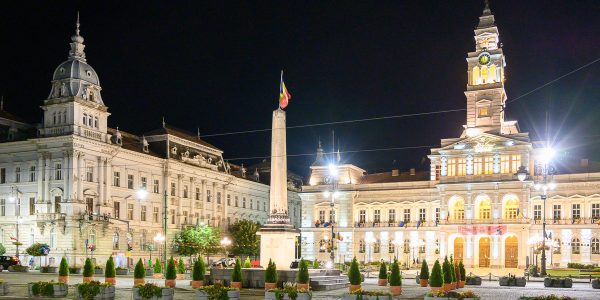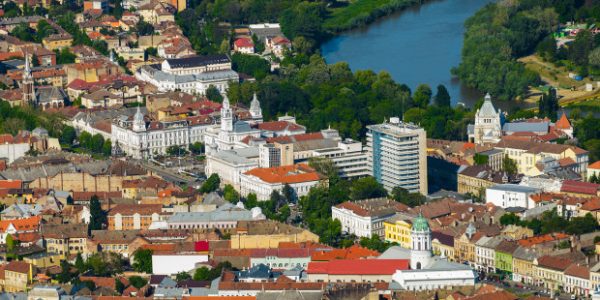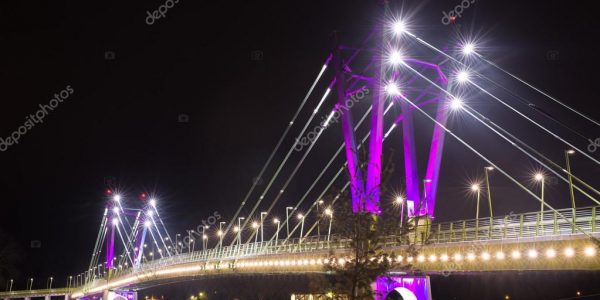This conference is in hybrid mode!
Arad City Highlights
Straddling the Mures River and occupying parts of both Crisana province and Banat, Arad traces its history back to the 11th century. Arad developed as a major trading post during the Turkish occupation, between 1551 and 1699. After 1699, the city was ruled by the Habsburg Monarchy and in 1834 Arad was declared a ‘free royal town’ by Emperor Francis I of Austria.
Today, Arad is an important industrial center and transportation hub, as well as home to two universities, a Romanian Orthodox theological seminary, a training school for teachers, and a music conservatory.
Churches and cathedrals in the city span four centuries, several denominations, and architectural styles ranging from baroque to neoclassic.
Arad County is also home to some important Orthodox monasteries, such as the ones from Hodos-Bodrog (dating from 1177), Bezdin (dating from 1334), Gai (built in 1760-1762), the Sf. Maria – Radna Franciscan Monastery (built in 1727 – 1826), the Princely Orthodox Church from Halmagiu (dating back to the 14th century), the Roman-Catholic Church from Sânpetru German (built in 1774).
Accomodation: CONTINENTAL FORUM ARAD
Web adress: https://continental-forum-arad.continentalhotels.ro/
Address: 79-81, Revolutiei Boulevard, 310130, Arad, Romania
Telephone: +40 372 578 800
Fax: +40 372 578 801
E-mail: forum.arad@continentalhotels.ro
Arad is a city of impressive buildings and architecture, with many of the main sights located along the principal thoroughfare, the broad, tree-lined, Bulevardul Revolutiei with trams running along it. These include the impressive white City Hall Palace (1875), the Palace of Culture (1911-1916), the neo-gothic and secessionist-style Red Church (1906), the large, domed Roman Catholic Church (1902-1904) and the neo-classical State Theatre (1874).
There are also some delightful examples of art nouveau, in particular along Strada Closca and around Piata Avram Iancu, such as Bohus Palace. There is also an extensive open air market in the older part of the town, west of Piata Avram Iancu, overshadowed by the tall towers of the baroque Orthodox Cathedral (1865) and nearby the old water tower (1896) being restored as a museum. At the corner with Strada Mihai Eminescu you will find the Secessionist Grozavescu Pharmacy (Farmacia Grozavescu) which has preserved its original interior.


